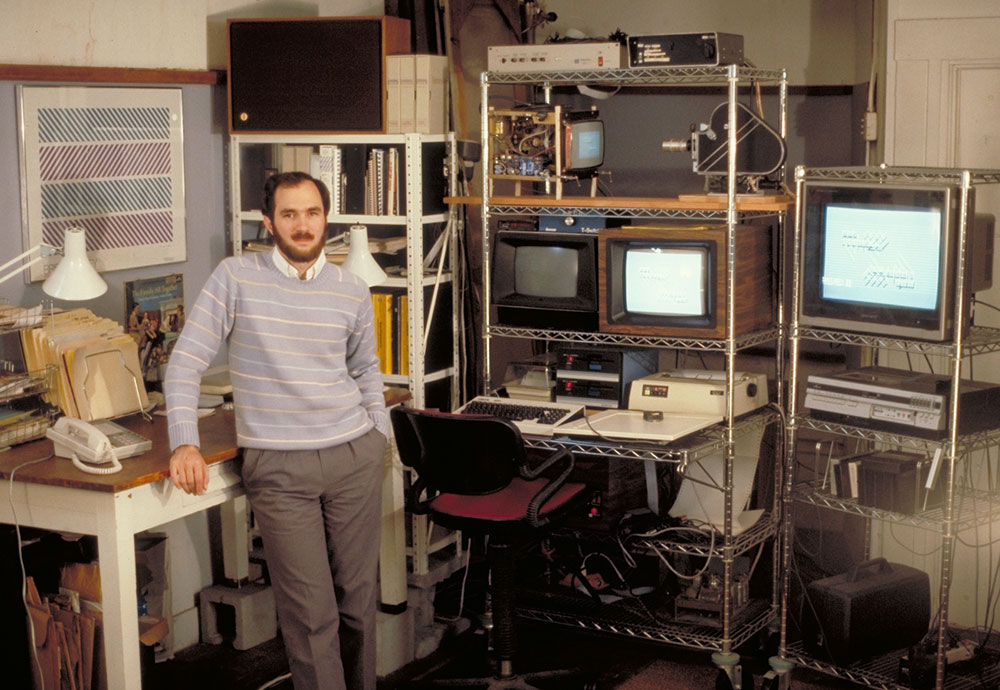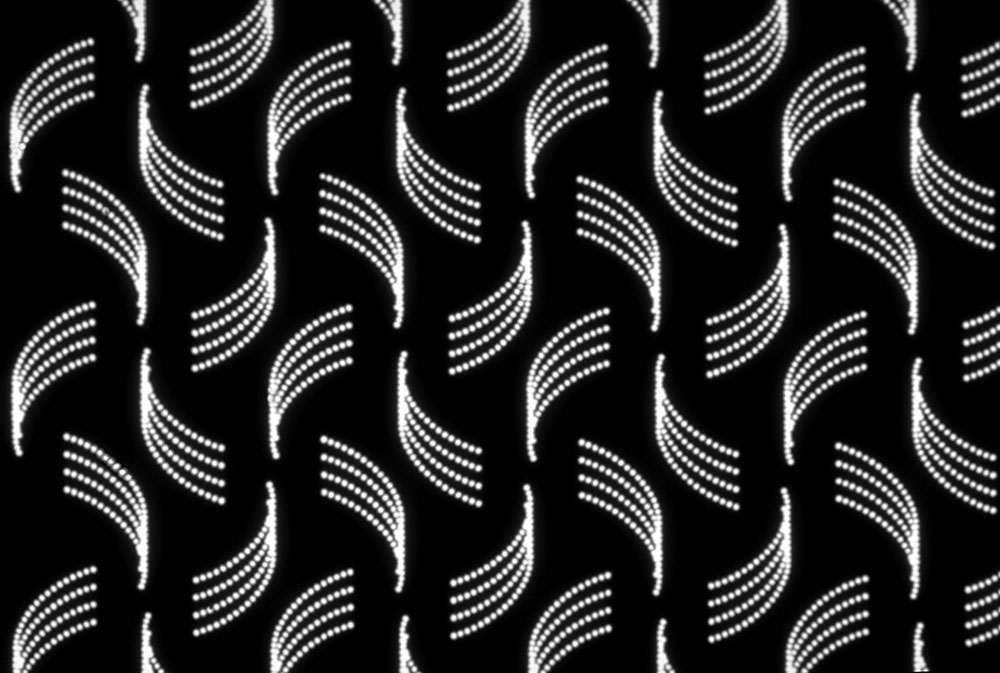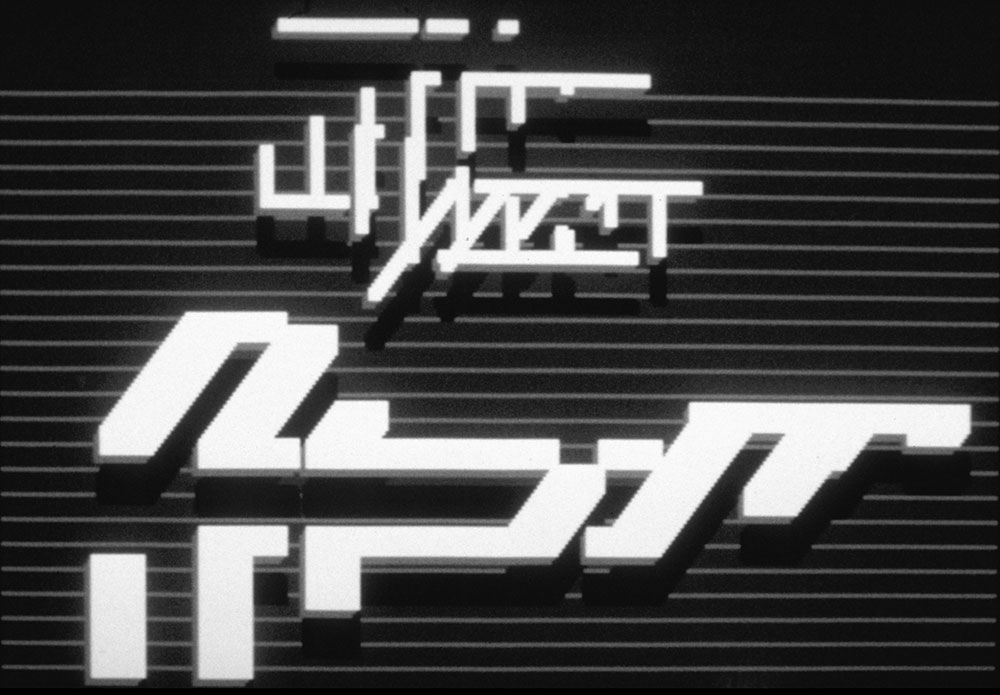originally published in
The Animation Bible!
A guide to Everything - From Flipbooks to Flash, 2008
A guide to Everything - From Flipbooks to Flash, 2008
In the early days of computer animation, programming skills were vital, since the small amount of available software was far from automated. As a result, artists and computer scientists generally worked together. Larry Cuba, in contrast, represents one of the first artists to embrace programming as the site of experimentation. He says he was motivated by "mathematics, rhythm, perception, and experimentation with the unknown" in the production of First Fig (1974), 3/78 (Objects and Transformations) (1978), Two Space (started ca. 1976; completed 1979), and Calculated Movements (1985). The abstract imagery of the films evolved within parameters set by Cuba during their programming phases.
Cuba's study of architecture in college reinforced his interest in form, function, and structure, which continued during his pursuit of animation in graduate school at the California Institute of the Arts. Because the Institute did not have sophisticated enough computer equipment, Cuba got access to the Jet Propulsion Laboratory (JPL) and taught himself how to program. The result was First Fig. It was made using FORTRAN on a Univac 1108 mainframe, and it opened the door to new experiences. The first was being hired as a programmer by John Whitney, Sr., who was producing Arabesque at Information International, Inc. (the Los Angeles studio known as Triple-I). Cuba was then hired to create an animated sequence for George Lucas's film Star Wars (1976), which took him to the University of Illinois at Chicago's Circle Graphics Habitat. There he worked with Tom DeFanti, who had developed a real-time animation system called GRASS.
After completing the Star Wars sequence, Cuba returned to Triple-I and began creating images for what would become Two Space. He programmed them and ran the footage through a moviola, thinking of it as test material. However, frustrated by the slow pace of production after working in real time with GRASS, he put Two Space on hold and moved back to Chicago to use that system again, this time to program the imagery for 3/78 (so named because it was completed in March 1978).
In this black-and-white film, "sixteen objects, each consisting of one hundred points of light, perform a series of precisely choreographed rhythmic transformations" accompanied by the sound of a shakuhachi, a Japanese bamboo flute; the work is an "exercise in the perception of motion and mathematical structure." The film was critically acclaimed but Cuba felt that while GRASS had allowed him to see real-time results, there had been too big a trade-off in terms of processing - it limited his ability to perform complex calculations.

Larry Cuba in his Santa Cruz studio, 1985
When he returned to California from Chicago, he was no longer able to work at Triple-I on Two Space, and the images he had considered test material became the basis for the film. However, they required post production work, which was anathema to Cuba, who was striving for a "total programming" approach that involved the creation of a mathematical formula, testing it to see the results, and, based on what appeared, adjusting the formula to try again. He believed that his point of focus should not be the film "but the program that created the film; why edit film when you can edit the software that generates it? I wanted everything to be in the program and driven algorithmically." However, he did not have this option, so he evaluated the experiments and selected nine to form the eight-minute film. Optical printing was used to reduce the images from 35mm to 16mm, to make the patterns bleed off the edge of the screen (which his program wasn't doing), and to reduce the speed at the end to come to a slow stop with the music. While all the images were created using software, the segments were spliced together rather than generated from beginning to end. Images in the film consist of a series of twelve two-dimensional patterns "generated by performing a set of symmetry operations (translations, rotations, and reflections) upon a basic figure." They move to classical Javanese gamelan music, and create optical illusions through figure-ground reversals and after-image effects.
To create Calculated Movements, Cuba used the ideas that originated in his programming for Two Space, but implemented them using Z-GRASS, the personal computer version of the GRASS system; it allowed him to work at home for the first time, rather than begging time from various institutions. Z-GRASS accommodated more arbitrary mathematical calculations, but it was relatively slow, taking approximately two minutes to draw each frame. After about two years of experimentation, his programming for Calculated Movements yielded approximately three hours of material. The experiments were recorded on a Lyon-Lamb half-inch video system for preview. The footage included strands of images selected to form the film as a whole; in some these were "overlaid into a two-dimensional composition in addition to a temporal one (think of voices singing different strands, coming in and out at different times, and sometimes overlapping)."
Whereas 3/78 and Two Space were constructed with dots of light that create curved and flowing lines, the visual design of Calculated Movements is much more angular. The film is made up of "a choreographed sequence of graphic events constructed from simple elements repeated and combined in a hierarchical structure" that range in complexity. It is the first work Cuba made with a raster graphics system, which allowed him to create solid areas rather than use only dots of light.


Images from Larry Cuba's films, Two Space (left) and Calculated Movements (right)
At the end of the production process, the ideas, software, and data were distilled into a final "edit" of a program that drew every frame of Calculated Movements from beginning to end. The frames were shot onto 16mm film with no further editing or processing needed. As Cuba explains, "An animation camera was set up in front of the video monitor. After the computer finished drawing one image on the screen, it triggered the camera to shoot one frame. Since it took the computer two minutes to compute and draw each frame, the system ran twenty-four hours a day for two weeks to shoot the entire six-minute film." He describes the result as "a realization of my desire to escape traditional film production technology (which seemed archaic), and move all creative activity to the computer. Twenty-five years later, we're all living this vision with personal computers and software like After Effects and Premiere."